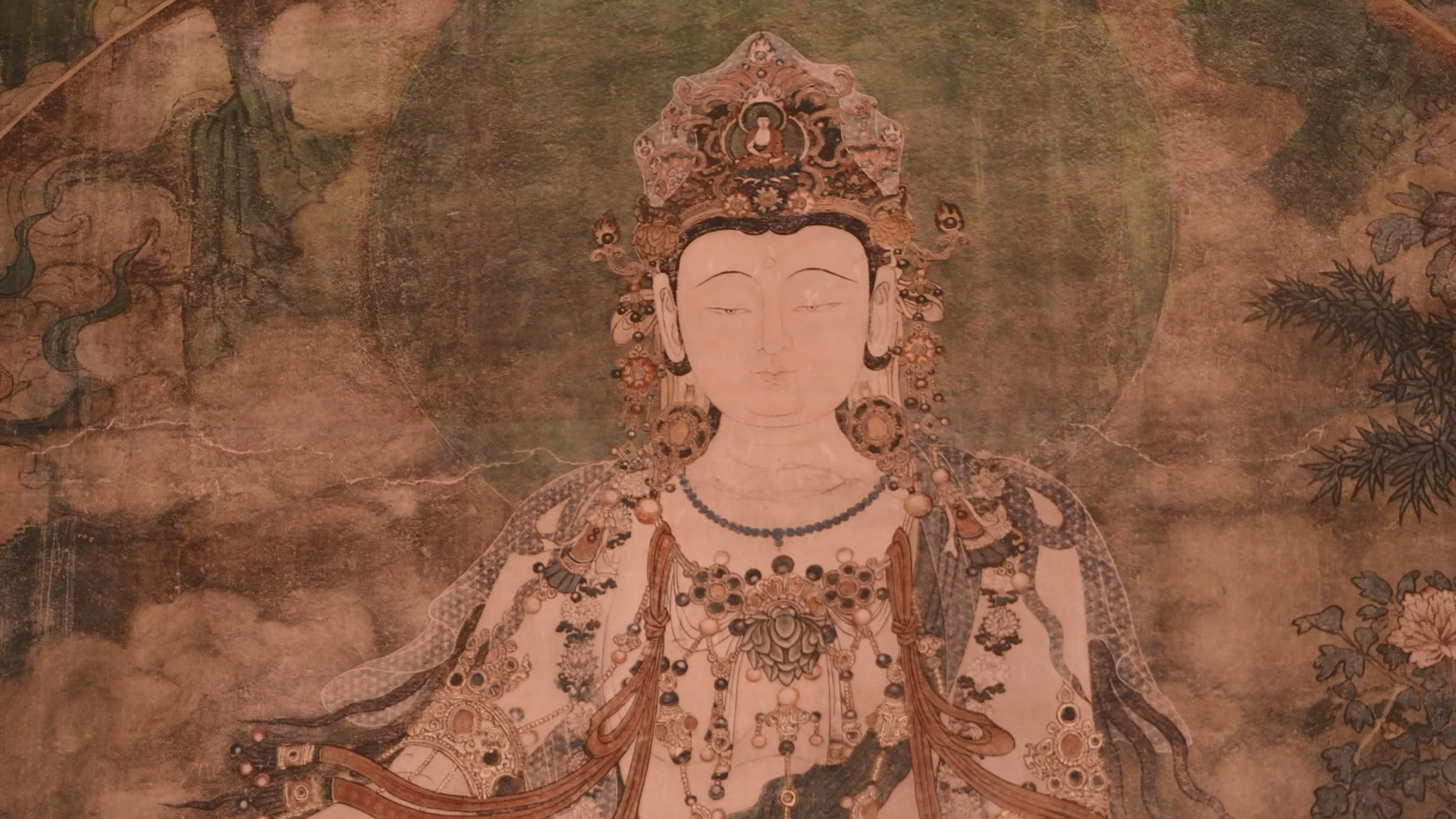Digital technology brings new life to cultural relics at Fahai Temple Mural Art Center
From:CGTNAuthor: 2023-05-05 09:35
Thanks to 4K high-definition display screens, a dome theater and other technologies, the Fahai Temple Mural Art Center in Beijing brings murals that have been dormant for nearly 600 years back to life, giving audiences a truly immersive experience.
Fahai Temple was first built in 1439 during the early Ming Dynasty (1368-1644). It is well-known for the murals that grace its Grand Hall.
Noted for their exquisite craftsmanship, such as their gelled patterning and gilding, they have been listed among the "three major frescoes in China," together with those in Dunhuang in Gansu Province and Yongle Palace, a historic Taoist temple complex in Shanxi.
"There are 10 extant pieces of murals based on four themes, and they cover 236.7 square meters in total. It took 15 court painters about four years to complete them," said Xu Ke, a docent who helps guide visitors at the art center.
"These are among the best murals in China in terms of the painting gilding techniques used, the method of composition and the shape of the characters. The extensive use of mineral pigments has allowed them to retain their brilliant colors for nearly 600 years."
The Grand Hall is open to the public on a limited basis every day, and viewers can only admire them under the dim glare of the docent's flashlight.

Replica of Fahai Temple murals in Beijing. /CGTN
In 2023, the Fahai Temple Mural Art Center opened its doors to the public. Large 4K digital screens were used to restore the frescoes to their original size.
"With digitization, we can enlarge different parts of the murals so visitors can see them more clearly. For example, the crown on the Avalokitesvara's head," said Liu Xiaobo, director of the art center.
"Getting access to such detail would be impossible (at the temple itself), because the head is about three meters above the ground, and there is no ladder for people to climb to get a proper look."
Every half an hour, all of the screens in the exhibition hall play a 3-minute animation in tandem. Auspicious decorations, animals, and other elements from the murals are shown on the screen to the accompaniment of emotive background music, creating some unforgettable images.
There is also a dome theater in the hall that screens a 12-minute short film called "Dream in Fahai." This focuses on one of the painters who helped create the murals. All of the figures and animal images were taken from the original frescoes inside the temple and recreated using 3D modeling.
Liu Xiaobo said a digital exhibition should help the audience see the relics more clearly and understand them in greater depth.
The curator spells out the long history of the frescoes of Fahai Temple and made a comparative analysis with other cultural relics in China and overseas. Visitors can see how frescoes originated and developed in China from various dimensions.
Those who come to the art center can also learn more about the creation process.
"We asked a painter to create murals in a traditional way and we followed him on a step-by-step basis for two months. We digitally highlighted the lines in the mural and asked the artist to restore it. Together with the captions below, visitors can easily understand what is happening," explained Liu.
With the development of new technology, the protection and inheritance of traditional culture has fully entered the digital age.
"We should interpret cultural relics using digital means, to let spectators know where they came from, how they were made, and what kind of cultural connotations they have," Liu said.
"The ultimate goal for our digital display is to deliver academic content to the public in a language they can understand. It's a challenge but it's important."
Edit:董丽娜
The copyright of the article and the picture belongs to the original author. If there is any infringement, please contact to delete it